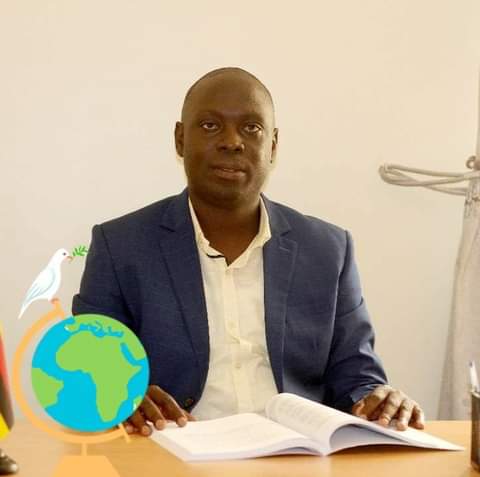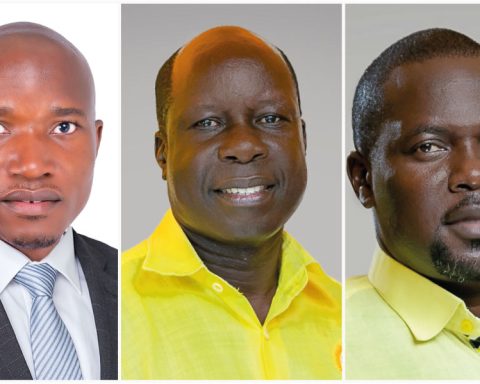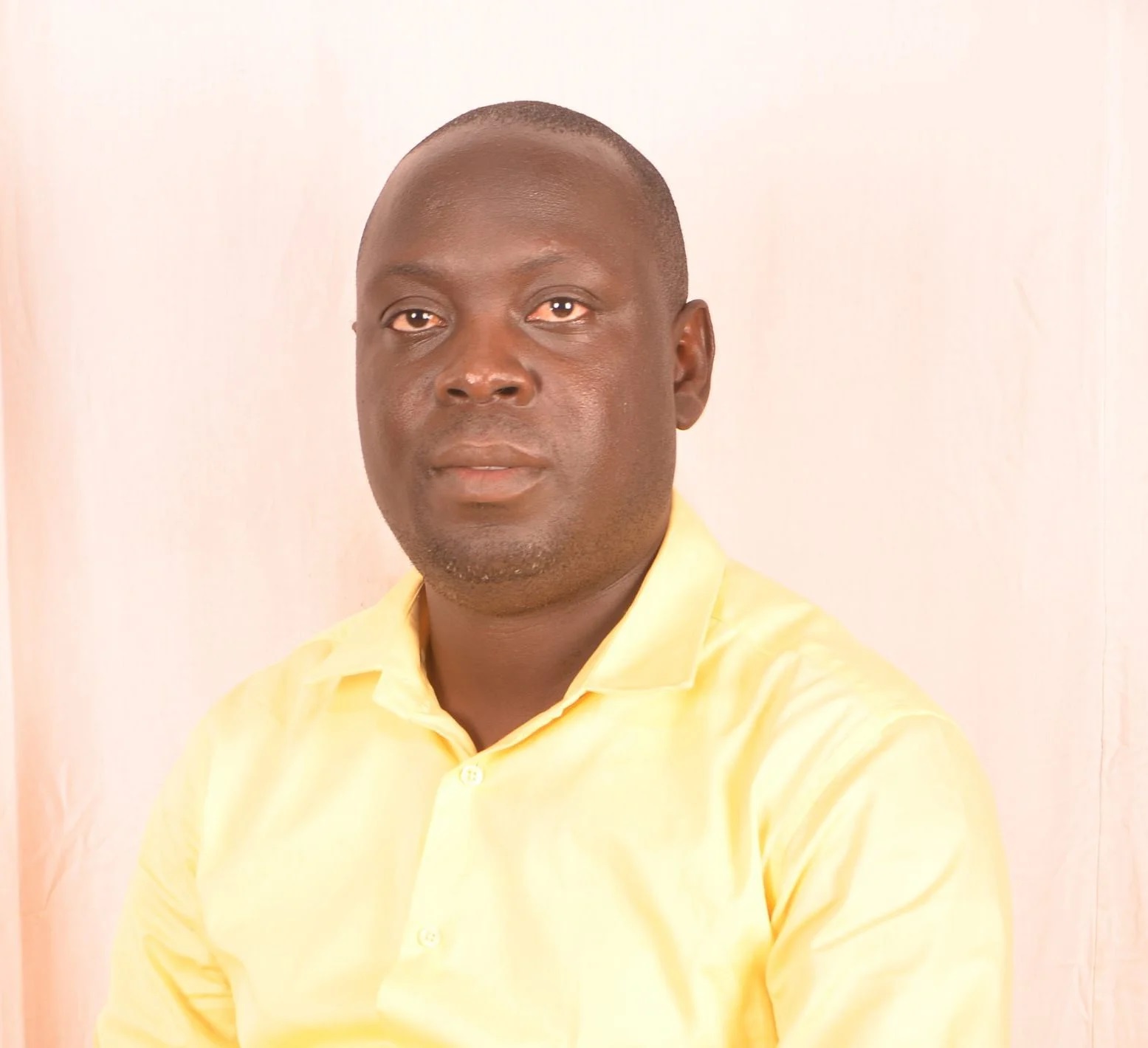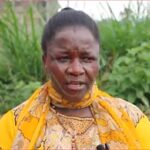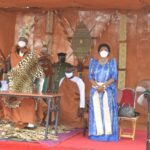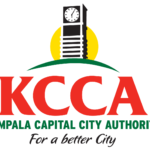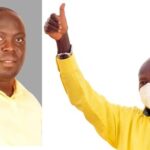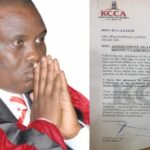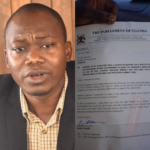By Faruk Kirunda
Presidential candidate, Lt. Gen. Henry Tumukunde has penned a critical outline targeting several infrastructure projects intending to demonise Government among voters hoping to win them over to his side. He titled his document: “HOW DID WE GET HERE?”
Below is my point-by-point one-armed response to Tumukunde answering him on “How and why we got here-and what next”.

ENTEBBE EXPRESS HIGHWAY:
Q: The four lane 51Km road is the world’s most expensive road with a total cost of UGX:1.19 trillion making UGX:23 billion per km. Of the UGX:1.19 trillion cost, 875 billion was a loan from Exim Bank of China. The road is private in a way that every vehicle apart from those with Gov’t number plate will be paying a road toll. No motorcycle, bicycle and pedestrians will be allowed after a one year grace period. It means that the poor taxpayer will pay for this road but they will never use it.(Indirect Apartheid)
Ans: The ultra modern Entebbe Express Highway was constructed as a toll road-pay as you drive. It was intended to accommodate fast travel to and from Entebbe and to alleviate congestion on the old road. Traffic jam on the old road costs the economy trillions of money. The Express Highway will save the economy from this loss.
The cost of the Express Highway shot up because of compensation for right of way involving payment of a big chunk of the funds to Project Affected Persons (PAPs). People demand colossal sums of money because they believe that government has an endless stream of money. Otherwise the cost would be commensurate with the quality of the road.
Attempts to pass legislation to grant Government right of way for public projects were resisted and misconstrued as attempts to grab people’s land. So why complain? The cost also varies depending on the terrain where the a road passes; the Expressway goes through marshland, thus requiring a lot of materials and technical expertise to fortify the ground.
It also should be noted that materials (cement, iron bars, etc) made up a large part of the cost because most were imported. Government is promoting Buy Uganda Build Uganda (BUBU) to empower local manufacturers to make these materials here. This will reduce the cost of infrastructure construction significantly. Paying to use a road is standard practice so as to maintain the road.
In the case of the Expressway, money raised from the toll collections will go towards clearing the loan used to construct it. The contractor will collect the revenues and hand over the road to Government when their sum is cleared in a projected period of time. Anybody who doesn’t use the road will not pay for its use, logically. Cost of materials, terrain,
The option to use the free old road remains, and that road, too, will soon be modernised to satisfy all categories of travelers. Did Lt. Gen. Tumukunde prefer that the Expressway is not built or what? What are his options?
NEW MULAGO HOSPITAL:
Q: The hospital cost the tax payer UGX:250billion all in loans but the same hospital was made private at its launch. For example: Consultation fee is 50,000, normal delivery is UGX.890000 and all other services at the facilit are private. This means that the common Uganda will not enjoy the services of their taxes.(Omwaavu wakufa)
Ans: Mulago has two complexes. The new one was constructed to take care of specialised cases including the most advanced surgeries such as open heart surgery. The cost of services helps keep the facility in top notch status and to help repay the loans used to construct it. Still, it remains a cheaper option than going to foreign countries. Does Gen. Tumukunde wish to say that after the loans are paid up the hospital will become Museveni’s or for Ugandans?
The old complex remains functional, providing free services to Ugandans. Not everybody can be accommodated at the new section. Neither, is it necessary because there are more hospitals in Uganda today to provide services to patients in their localities. Mulago is a national referral which must have worthwhile facilities to attend to any condition. This capacity was not there before. Unfortunately, it is not yet possible to provide all services freely due to the technical needs of operating such a high class facility.
ISIMBA POWER DAM:
Q: The 183.2 MegaWatts project costed the taxpayer Us dollars 567.7M, $482M of the total cost being a loan from Exim Bank and to be paid in 25yrs at 2% interest. Actually after it’s launch it was found out that the constructor was still demanding over 350 billion and even the bridge connecting to the dam had not been constructed yet it was part of the project and all the money had been released.
Ans: Gen. Tumukunde does not specify that Government of Ugandan counterpart funded the project to the tune of $85.2million (15%). The loan bit was well approved by Parliament on the wisdom of the people’s representatives who appreciate that people need power to light their homes and run their small machines and small scale factories.
Every aspect of the dam (including the bridge) as provided for in the designs for the project has been put in place with final works set to be completed next month, although the dam section was completed and commissioned last year.
LUBOWA SPECIALISED HOSPITAL:
Q: The hospital which was to be constructed by an investor costed the taxpayer UGX:600billion in loan. Imagine borrowing a loan and give it to an investor, add him tax holiday, give him free land, subsidised electricity and water plus other offers to construct a hospital and run it until he recovers his capital then he hands it over to the government!
MPs tried to tour the site and General Elly Tumwine deployed UPDF which stopped them. A wise citizen used a drone camera and it was realised that mafias are just rearing chicken inside. Nothing like a hospital.
Ans: Construction works on the ultra modern hospital are going on. When completed, the hospital will save the country unlimited amounts of money which have previously been spent on medical tourism. None of the terms accorded to the investor were not subjected to intense negotiation and approval even by Parliament. You don’t expect such a hospital to be built in a day. Just because Tumukunde has not been at the site does not mean that nothing is happening. That drone must have gone to Biyinzika.
UGANDA AIRLINE REVIVAL:
Q: By the time of privatizing the airline, it had 12 passenger jets including 2 Boeng aircrafts and had an air cargo branch with about 5 jets. Later on in 2019 the airline was revived with 2 Tuku Tuku Bormbadier jets and government only has 1% of the shares yet it financed the project 100% on loan.
Ans: Ugandan Airlines is on its way to gaining the glory it never had. As we speak, two brand new wide-body Airbus planes are expected to arrive in the country any time very soon.
The multi-national aerospace corporation, Airbus SE finished final painting works on the newly ordered A330-800 airliners which will beef up the four Bombardiers acquired last year which the General derogatively calls “tuk tuk”.
By the time Covid-19 disrupted Airline operations, Uganda Airlines had become a hit in the market. Uganda’s flag will proudly fly under better management than before when it was necessary to shut down its loss making operations. Anybody who tries to mess up the airline will be dealt with accordingly. We cannot keep making back and forth movements in our development plans.
ENTEBE AIRPORT EXPANSION:
Q: The US dollars 200M project was funded by the Chinese Exim Bank on 2% interest and Lake Victoria was given to the bank as security. This is one reason why fishermen on the lake are dying everyday because UPDF was deployed to protect the interests of the money lender. The Chinese now use the lake for fishing and sand mining.
Ans: Where is evidence that Lake Victoria was staked as security for the loan to upgrade Entebbe airport? How possible is that? That is mixing up issues because UPDF was deployed on the lakes specifically to man it and stop depletion of fish stocks by fishermen who used undersized nets. As a result of the deployment, fish stocks have been replenished, enabling Uganda to earn more foreign exchange. Nobody has been stopped from fishing or using the lake provided that they meet the required standards.
BUJAGALI POWER PROJECT:
Q: The 250Megawatts power plant costed omuntu wawansi US dollars 862M all as loan from International Finance Corporation, African Development Fund, European Investment Bank, German Investment Corporation, KfW, PROPARCO of France, French Development Agency, Netherlands Development Finance Company, Absa Group Limited, BNP Paribas, Nedbank and Standard Chartered Bank.
Ans: The wisdom of constructing power dams is obvious even to a peasant. But because these are capital intensive projects, acquiring loans on well negotiated terms to fund is not a problem. Uganda needs enough power to fast track industrialisation and we cannot be discouraged by people like Tumukunde. Do they prefer that no dams are built? Are they prepared to fund them?
KARUMA POWER PROJECT:
Q: The 600 MegaWatts power dam has costed tax payer the tax payer US dollars 1.7B, $1.435B of the total cost being a loan from Exim Bank of China. The loan to be paid in 20yrs since 2018.
Uganda sells electricity to Neighbouring countries but the price per unit of electricity is cheaper in the importing countries compared to the source. Is this economics or something else? And Kenya which buys power from Uganda has reached at 65% of rural urban electrification yet Uganda the source is at less that 25%.
Ans: Refer to the same as above! However, Kenya may have better rural electrification rates because they saw the wisdom of massive electricity generation earlier. Remember that they have enjoyed uninterrupted stability unlike here where life literally begun in 1986. When all the dams are in place and generating power to full capacity, Ugandans will enjoy affordable rates without interruption.
AKII BUA STADIUM
Q: The staduim which was supposed to be constructed in Lira District in recognition of Uganda’s Olympic medalist Akii Bua costed the taxpayer UGX 650M but guess what! they constructed a pig’s shed and levelled the ground zig zag and work was complete. Now the government has awarded the same staduim to Chinese firm for reconstruction and other funds are going to be released for double work. Uganda Zabu!
Ans: The original plan for the stadium went according to plan. The Chinese are taking on a new phase to put the stadium at a higher standard worth its name.
NILE BRIDGE JINJA:
Q: The 525m bridge costed the taxpayer US dollars 125. Of these 80% was a loan from the government of Japan. Actually within 3 weeks of its launch the bridge had started developing cracks.
Ans: Financing the project with a loan is not the problem. Uganda can meet all its loan obligations. What is important is the economic value of the bridge and its quality. It is ranked the second longest The cracks referred to were actually a surface asphalt peeling which fell within the project liability period within which the contractor had to detect any defects and fix them. That was done!
NAADS:
Q: The programme which was lauched in 2001 costed taxpayer trillions of Shillings. NAADS is well remembered for distribution of Cassava stems as seedlings and decayed beans and maize seeds to farmers as Capital(Entandikwa). After it was publicly discovered that the project was only enriching the rich Museven shifted it to UPDF and named it Operation Wealth Creation headed By his brother Salim Saleh. The purpose of putting it under UPDF was to avoid accountability. No Ugandan peasant has ever been elevated out of poverty through this project. All the factories in Kapeka that have been constructed using this UGx.1 trillion project annually are owned by Salim Saleh and M7.
Ans: NAADS has uplifted thousands of Ugandans out of poverty. Gen. Tumukunde should come with us to tour some of the successful farmers who are so grateful for the programme. Without NAADS, Uganda’s agricultural sector would have declined greatly as farmers had stagnated in subsistence farming and without direct Government support. The introduction of Operation Wealth Creation (OWC) under UPDF was intended to address weaknesses that had come up in the supply of inputs whereby officials of NAADS had become lax or colluding in loss of funds and supply of substandard inputs. Army discipline helped to plug these loopholes and OWC is a success story which every Ugandan should support.
Gen. Tumukunde, as a long serving government official, should have complemented effort to make NAADS/OWC a bigger hit. The problem is that officials leave President Museveni to struggle alone in uplifting the livelihoods of Ugandans. Who is to blame?
BOTTLE IRRIGATION.
Q: This project costed tax payer over UG: 3.7billion and it died at its launch. It is on this Project that Museven earned himself the name Bosco.
Ans: The idea of bottle irrigation remains logical in a country where full adoption of modern irrigation systems is still in progress. Bottle irrigation is cheap and effective as demonstrated by the president and many took it up. Unfortunately, cynics saw it as a laughing matter. The principle was for Ugandans to adopt irrigation methods to be able to increase their yields during and outside rainy seasons. Where was Shs3.7billion spent?
MAAMA ESTERI KOKUNDEKA MEMORIAL SCHOOL.
Q: This is the only school in Uganda that Museven has ever constructed from Foundation in 35yrs. The school which is located in Rushozi Kashari Mbarara District was constructed as a memorial of his late mother Esteri Kokundeka. The school runs from Primary to S.4 but secondary section has no UNEB Centre Number up to now since it was opened around 2010. The other school which M7 constructed is in Tanzania and he was appreciating them for supporting him in Luwero, Taxpayers money was spent still.
Ans: To say that President Museveni has constructed only one school in 35 years is to bring into question one’s sanity. Does Gen. Tumukunde wish to say that he does not see the incredible milestones made in the Education sector since 1986? How many schools were in the country then and how many are there now? How many children have gone to school and how many are enrolled? Esteri Kokundeka is not the only school. For the one constructed in Tanzania, anybody at the level of a General should know the historical background leading up to state of Uganda today and the role Tanzanians played in liberating Uganda. Does Tumukunde know what it would cost us if we had to repay the Tanzanians for everything they did for us as a country?
SOROTI FRUIT FACTORY:
Q: The factory which was constructed in 2014 by Government of Uganda in Partnership with the Korean International Cooperation Agency has never produced even a single litre of juice as of now.
Ans: First of all, the factory is in place; it wasn’t there previously. Secondly, it is in operation, processing fruit for the local and international markets. Farmers are becoming rich. With increased production capacity, we shall no longer import fruits or processed juices anymore. The factory is a good step in the right direction of industrialising agriculture in Uganda.
Q: DO YOU REALISE THAT EVERY PROJECT IS ON LOAN? NOW WHAT HAS M7 DONE USING THE TAXES HE COLLECTS EVERYDAY?
Ans: Is it the first time that Gen. Tumukunde is hearing of application of loans in public project financing? Is it a Ugandan problem? These loans are not taken to fund consumption but to fund and facilitate production. Uganda is able to meet its loan obligations, which is why creditors are always willing to provide credit facilities.
Government’s plan has always been to systematically cut out reliance on foreign funding-loans or grants-and fund the entire national budget locally. This will be possible when the economy is fully integrated with new sources of funding like oil and improved agriculture as well as industrialisation.
The good General should find other means to run his campaign and quit acting detached and holy. And why didn’t he raise these issues while still serving at a high level in Government?
The author is a Presidential Assistant in Charge of Media Management
Contact: kirundaf2@gmail.com
0776980486/0702980486
![]()


